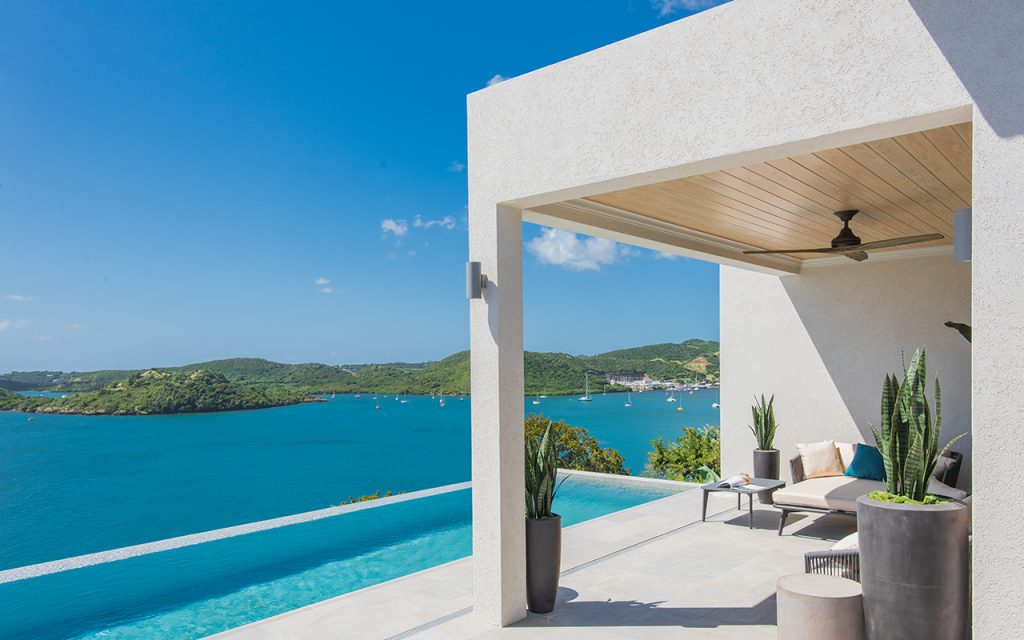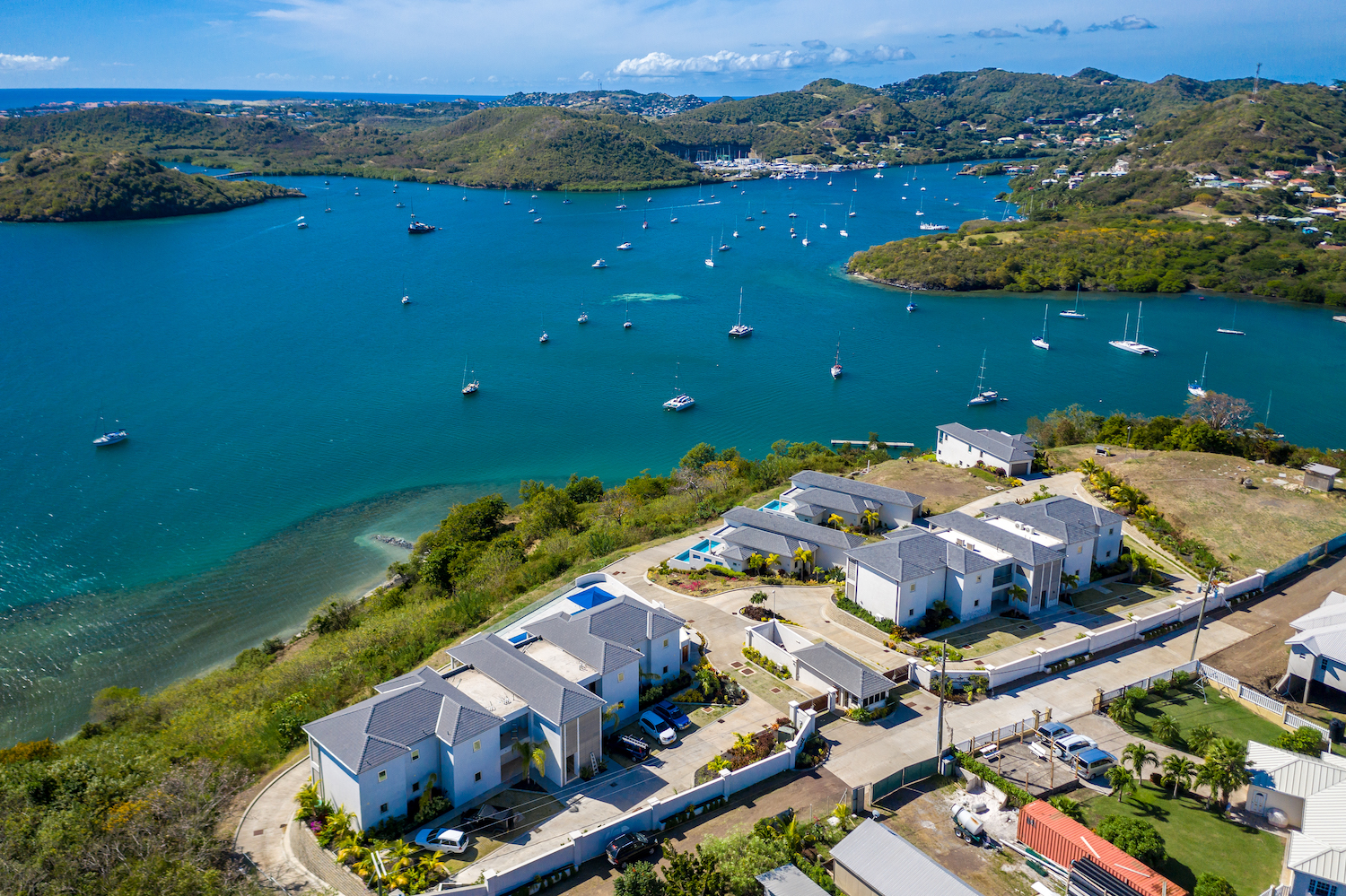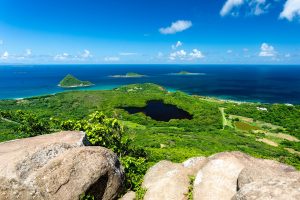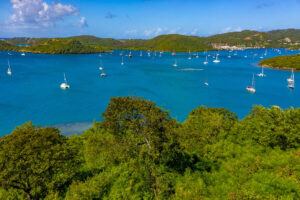A Guide to the Caribbean Island of Grenada
Imagine waking up to the soothing sound of gentle waves crashing against the pristine shoreline, as you inhale the fresh Caribbean breeze and watch the first golden rays of sunshine peeking over lush, green mountains. Welcome to Grenada, the Spice Island of the West Indies, where your dreamy tropical escape becomes a reality. In this guide to Grenada, we’ll take you on a journey through this Caribbean paradise – from secluded beaches to colorful marketplaces – and provide insider tips for navigating this vibrant island along the way. Get ready to fall in love with Grenada, where every moment feels like a postcard come to life.

Grenada is a beautiful island nation located in the Caribbean Sea known as the “Island of Spice” due to its production of nutmeg and mace crops. The country is home to picturesque natural harbors, colorful houses, a rich culinary culture, and stunning beaches such as Grand Anse Beach. Its history includes European colonization by the French and later the British, as well as a period of Marxist-Leninist government in the late 1970s and early 1980s. It gained independence from the United Kingdom in 1974 and is a member of the Commonwealth of Nations with a high Human Development Index (HDI) of 0.779.
Geography and Climate of Grenada
Grenada is a beautiful island nation located in the western Caribbean Sea, consisting of three main islands: Grenada, Carriacou, and Petite Martinique. The country’s geography is characterized by high hills, volcanic slopes, and pristine beaches – all within a relatively small area.
The island is known for its diverse terrain, which ranges from mountainous regions to low-lying coasts. Its landscape is rich in natural beauty – with lush rainforests, waterfalls, and coral reefs that are just waiting to be explored.
Despite its size, Grenada experiences varying weather patterns throughout the year. The tropical climate can be divided into two seasons: the dry season (January to May) and the rainy season (June to December). During the dry season, visitors can expect warm temperatures with little rainfall. However, during the rainy season, Grenada can experience heavy downpours and thunderstorms.
While the rainy season may deter some travelers from visiting Grenada, it is important to note that this time of year is perfect for those who enjoy watching nature at its best. The rainforest comes alive during this period as plants and trees burst into bloom.
In many ways, visiting Grenada during the rainy season is similar to watching a movie: just as a good film needs darkness and light to create an engaging story; Grenada’s landscape needs rain and sunshine for its beauty to truly shine through.
With that said, before planning your trip to Grenada, it is important to know how its geographic location influences its weather patterns.
Island Location and Topography
Grenada is located approximately 100 miles north of Venezuela in South America. It consists of three main islands (Grenada, Carriacou, and Petite Martinique), and several uninhabited islets. The topography of Grenada is very hilly, with its highest peak standing at 2,757 feet above sea level.
At the heart of Grenada’s geography lies Mount St. Catherine, which dominates the skyline in the center of the island. It is a challenging climb to the summit, but those who make it are rewarded with stunning panoramic views of Grenada’s landscape.
The island’s location close to the equator means that it experiences warm temperatures year-round. However, the trade winds keep the weather from becoming too hot for visitors or residents.
Some may argue that Grenada’s position as an island so close to the equator can result in uncomfortably high temperatures – particularly during the summer months. However, this is where the trade winds come into play, providing a cooling effect that helps regulate temperature levels across the island.
The climate of Grenada can be likened to a well-orchestrated symphony. Each element has a part to play – from warm temperatures to cool breezes – coming together to create a harmonious and enjoyable experience for all who visit.
Whether you are planning a trip to Grenada for its scenic beauty or simply want to indulge in its rich cultural traditions – understanding its geography and climate patterns is crucial for making the most out of your experience on this beautiful island paradise.
Weather Patterns and Seasons
Grenada’s tropical climate is characterized by two distinct seasons: the rainy season, which runs from June to December, and the dry season, which runs from January to May. During the rainy season, you can expect a lot of rainfall, with the occasional thunderstorms and hurricanes passing through. The dry season is generally much drier, with mild temperatures and pleasant ocean breezes.
It’s important to note that despite being in the Caribbean region, Grenada’s position further south than its neighboring islands means that it is less prone to hurricane activity. That being said, it’s always a good idea to keep an eye on the forecast during hurricane season if you plan on traveling to Grenada.
The best time to visit Grenada for most travelers is during the dry season. With clear blue skies, calm ocean waters, and warm temperatures ranging from 75-85°F (24-29°C), it’s the perfect time for outdoor activities such as hiking, beachcombing, or exploring the island’s botanical gardens.
Imagine yourself lounging on Grand Anse Beach with your toes in the sand and an ice-cold drink in hand while basking in the sun on an idyllic afternoon during Grenada’s dry season. Sounds like paradise, doesn’t it?
Now that we’ve covered Grenada’s weather patterns let’s dive deeper into its rich history.
Discovering Grenada’s Rich History
Grenada has a fascinating and complex history that reflects its diverse cultural influences. The earliest known inhabitants of Grenada were indigenous Arawak peoples who named the island “Camahogne” meaning “land of spices”.
Over time, European settlers arrived in Grenada in search of new opportunities. In 1650-1750 – they transplanted African slaves to the island, exploiting and ultimately devastating its natural resources. The French colonized the island in 1650, followed by the British in 1762.
The colonial period saw an influx of plantation-style agriculture, with crops such as sugar, cocoa, and nutmeg grown on large estates worked by enslaved peoples. Today, Grenada boasts some of the world’s finest organic chocolate and spice production.
However, colonization also brought a darker side to Grenadian history as it was accompanied by many atrocities perpetuated against the island’s indigenous inhabitants and subjected peoples. While colonization facilitated economic growth, the cost was often paid with human lives and suffering.
Details about Grenada’s history can be found in several museums throughout the island like Grenada National Museum where there are exhibitions featuring works of art by local artists alongside displays of artifacts from Grenada’s history.
Just like a blend of spices makes your meal more flavorful; Grenada’s story is a fascinating mix of influences that makes its place amongst Caribbean nations unique.
Now that we’ve taken a walk through Grenada’s history let us move on to exploring its culture and traditions.
Indigenous Peoples and European Colonization
Grenada has a rich history that includes the indigenous Arawak population and European colonization. The Arawaks are believed to have originated from South America, while the Caribs later displaced them on Grenada and many of the other islands in the Lesser Antilles. The Arawaks were known for their horticultural practices, trading network, and unique pottery styles.
When Christopher Columbus arrived in Grenada in 1498, he named the island “Concepción.” The Spanish made several expeditions to Grenada during the early 16th century, but they were not successful in establishing a settlement. By the mid-1600s, the French had established colonies on Grenada and other nearby islands. They introduced African slaves to work on their plantations.
In 1783, after years of fighting over land rights with the French, Grenada became a British colony under the Treaty of Paris. Under British rule, sugar was the primary crop brought about by use of farming machinery which intensified slavery on the island.
The exploitation of African slaves resulted in a significant impact on Grenadian society. Slaves began to participate in cultural activities outside their plantation society as they sought comfort among themselves during their free time which opened opportunities for slave dances and songs that would go on to influence calypso music—a prominent feature throughout the Caribbean till this day. Additionally, European faiths such as Roman Catholicism and Protestantism took root on the island alongside indigenous religious practices.
The outcomes of European colonization didn’t come without misfortunes. One example is when hurricane Janet ravaged through Venezuela and several Caribbean islands including Grenada in 1955. As an aftermath of hurricane Janet’s devastation, school children were subjected to racism after attending classes with no facilities or water supply for extended periods.
Despite the consequences of colonization, Grenada has preserved some aspects of indigenous cultural heritage. Traditional cuisine is still present in local restaurants, and Creole language is spoken throughout the island. However, more work can be done towards preserving historical sites that hold cultural significance.
Preserving indigenous culture on colonial lands is like tending to a garden in a storm. The seeds that were planted by the Arawaks have been nourished by different cultures over time, but the tempest-like nature of colonization has made it difficult for them to flourish. Although there are parts of the garden that yield bountiful fruit today, we must continue working towards its growth if we hope to reap diversity’s full harvest.
Modern Grenada: Independence and Beyond
Grenada gained independence from the United Kingdom in 1974. Following this, Maurice Bishop became Prime Minister through a coup d’état with ambitions to make Grenada Marxist-Leninist state though his regime was soon opposed several years later which included opposition leaving Grenada’s political structure in disarray.
Grenada was once again put under British governance until parliamentary elections were held in 1984 with Nicholas Brathwaite elected as Prime Minister.
Twenty years into independence Grenada experienced hurricanes Ivan and Emily which devastated infrastructure leading to economic decline until recent times where foreign investment and tourism have helped stem further economic strife.
Today, Grenada’s economy consists of agriculture; though not as intensely as before as tourism has taken center stage along with other international investments bringing job opportunities even as Grenadian government officials remain seriously indebted internationally.
Grenada’s experience demonstrates how small nations must constantly adapt even after independence. Their successes and failures offer lessons to nations around the world facing similar challenges concerning international debt and opulence concentration.
To counter such effects of economic decline, new policies are being implemented by the Grenadian government to attract more foreign investment and assist local entrepreneurs. A famous example is an initiative where interested individuals can purchase citizenship on the island known as Grenada’s Citizenship-by-Investment program.
However, some have argued that such foreign investments can lead to the erasure of Grenadian culture and environmental destruction if not executed with care.
As a small nation with vulnerable assets, Grenada must tread carefully like a tightrope walker. The country must find ways to maintain its identity while balancing economic growth or else suffer the consequences of losing heritage.
Cultural Highlights and Traditions
Grenada’s rich culture is a delightful fusion of African, French, British, and Caribbean influences. The country’s history has significantly influenced its traditions and cultural highlights. Among the many that exist, one of the most popular is music. Visitors to the island can experience various genres of music such as calypso, reggae, and soca. Observing Grenadian people play these various genres can be an enthralling experience
The annual Spice Mas Carnival is one of Grenada’s most anticipated events and is known for its colorful parades, live music performances, and fervor like no other carnival in the Caribbean Islands. The festival takes place during the second week of August each year and draws thousands of participants from all over the world. During this time, visitors will enjoy lively street parties known as jouvert (pronounced ‘joo-VAY’), local cuisine, arts stalls featuring Grenadians’ unique handmade crafts.
Strolling through the streets of St. George’s around Carnival’s time feels like a euphoric dream where exuberant people are eager to share their extravagance trademark with every visitor.
Another significant aspect that adds to Grenada’s vibrant culture is its food. What makes it even more enjoyable is that spices such as nutmeg, cinnamon and turmeric make up almost every dish. Seafood dishes also feature plenty due to the island being naturally blessed with an abundant aquatic reserve. One should try the national dish “oil down,” which contains meat or fish mixed with vegetables cooked together in coconut milk to complete the taste sensation.
Not only does Grenada offer tasty dishes but is also commonly referred to as “The Spice Island,” because of its prevalence in nutmeg production globally. A visit to Dougaldston Estate situated in Gouyave provides you with a clear understanding of how nutmeg trees are cultivated and nutmegs harvested.
The residents of Grenada take pride in their customs, and visitors can get a chance to experience some of these traditions while on the island. For instance, you may observe Grand Roy villagers’ weekly street cleaning where residents join forces to keep their village pristine clean each Saturday morning. Observers may also be blessed to witness traditional wedding customs, which might include “jumping the broom,” a beautiful tribute to cultural roots that has remained enduring through time.
Grenadian people are always eager to share their rich cultural heritage with visitors, making it easy for tourists in Grenada to immerse themselves in several traditions and cultural highlights.
Grenadian Cuisine and Festivals
When it comes to culinary arts, Grenadians have a passion for food that’s bound to put you on an eating spree throughout your stay on the island. The island’s cuisine boasts of being hearty, flavorful, and nutritional from an assortment of vegetables, fruits, seafood, poultry meats prepared using locally sourced herbs, & spices at home-grown restaurants or during food fairs that are held annually across the different small villages.
Among many other specialties is grilled fish seasoned with any array of spices. This dish is available pretty much everywhere from small fishing villages such as Gouyave to prestigious dining hangs located close enough to famous rivers or picturesque beaches across the country.
At La Boulangerie Bakery & Wine Bar located in St. George’s town square area, salads are being produced using local spices such as cinnamon icicles mixed with fruit dressing. These same infusions are also added to wines served in the bar section creating an exceptional yet distinct taste sensation for customers.
Generally speaking, there’s a variety of dishes that locals enjoy eating and could guarantee satisfaction based on your preferences. However, two top favorites worth mentioning are callaloo soup & roti. These dishes are a big part of every Grenadian’s eating culture. The soups’ ingredients include grilled meat or seafood, peppers, onions, carrots, and various greens (such as okra and dasheen bush).
Roti is an Indian-influenced dish and a particularly special favorite on the island; it is made by rolling roti skins around the filling, usually including curried chickpeas and meat or pumpkin. Rotis can come in varying sizes, with the content varying to suit your dietary needs.
That said, satisfying one’s taste palate is subjective. It might be best for visitors seeking healthier cuisine options to stick to salads or roasted fruits that are locally made while enjoying organic tea preparations on offer across some of the island’s air-conditioned hotel amenities.
Besides its cuisine, Grenada offers a variety of festivals celebrating different aspects of the country’s heritage. These events provide an excellent opportunity for tourists to mingle with locals and learn more about their customs.
The Chocolate Festival is an event held annually and celebrates cocoa production, which has been celebrated since colonial times. This event takes its participants through a journey into chocolate-making from bean to bar demonstrations complemented with cooking shows such as ‘Cocoa Cuisine’ by experts in their trade.
The Carriacou Parang Festival is another must-attend festival that happens annually in December. This music festival features traditional Grenadian Christmas songs combining Spanish guitar percussion sounds giving rise to one of the most authentic cultural experiences in the Caribbean.
Other notable annual festivals include Spicemas Carnival mentioned earlier, known for lively parties celebrated all around the island. The Petite Martinique Annual Boat Race is another example of how deeply ingrained water sports are to this island nation.
Visitors will get an invaluable experience not only witnessing these events but also being involved directly as they step out of their comfort zones and appreciate the island’s rich culture.
Grenada is a vibrant tropical paradise nation with so much to offer, from its food culture and various festivals that visitors can enjoy immersing themselves in. Every part of this nation offers a unique cultural experience that one must encounter while exploring the island.
Must-Visit Attractions and Activities
Grenada may be a small island, but it is packed with must-visit attractions and activities that will keep you busy for days. Whether you are interested in relaxing on the island’s white sand beaches or exploring its lush tropical rainforests, Grenada has something for everyone.
One of the top attractions in Grenada is Grand Anse Beach. This stunning beach boasts two miles of golden sand fringed by swaying palm trees and crystal-clear turquoise waters. The beach is perfect for swimming, sunbathing, and water sports such as snorkeling, diving, kayaking, and paddleboarding. You can also indulge in delicious Caribbean cuisine at one of the many restaurants, bars or food vendors located nearby.
Another attraction worth visiting is the Concord Waterfall. Located in the mountains of St. John Parish, this picturesque waterfall cascades over rocks into a refreshing pool below. You can hike through the lush rainforest on a guided tour to reach the falls or go there by car. Once you arrive, you can cool off by taking a dip in the pool or simply take some time to admire the breathtaking views.
For those seeking adventure, Grenada offers an opportunity to explore its underworld marine world with a dive or snorkel trip out to Underwater Sculpture Park. The park is home to over 100 statues that depict scenes from Grenada’s history and culture which were created as an effort to relieve pressure from other aging reefs in Grenada’s Marine Protected Areas.
If you want to soak up some history and culture while in Grenada, then make sure to visit Fort George – which if an expansive fort strategically overlooking St.George’s harbor which was once used for military operations during times of conflict dating back to French occupation almost 200 years ago.
- Grenada has a land area of approximately 344 square kilometers (133 square miles), making it the 180th largest country in the world by land area.
- According to the World Bank, Grenada’s GDP was around $1.254 billion in 2023 and had a GDP per capita of approximately $10,726.
- In 2023, the population growth rate of Grenada was estimated to be at -0.26%, while life expectancy at birth stood at around 73 years, according to the United Nations.
Beaches, National Parks, and Historic Sites
If you are looking for natural beauty and historic landmarks, be sure to check out Grenada’s beaches, national parks, and historic sites. With so many to choose from, it can be hard to know where to begin.
The lush Grand Étang National Park is a must-visit destination in Grenada. This park is located in the heart of the island and offers visitors breathtaking views of its rainforest-covered mountains, cascading waterfalls, and thriving wildlife such as Mona monkeys. There are plenty of hiking trails available from easy walks around the lake to challenging hikes through the mountain forests.
Another top attraction in Grenada is Levera Beach National Park. This pristine beach is situated on the northeastern shore of the island and offers breathtaking views of the ocean. You can swim or relax on the soft sand or explore nearby mangrove swamps and salt ponds that provide habitats for a wide range of birdlife.
Fort Frederick is another popular historic site in Grenada. The fort was built by French military forces in 1779 to protect their possessions in Grenada against potential British incursions. Enjoy panoramic views from one of the two main gates on site with a great view over St George’s harbor which lies below – some may argue watching a sunset over the city is second to none.
If you want something unusual or different during your visit to Grenada head to Dougaldston Estate Museum – this small off-the-beaten-path museum keeps alive some aspects of Drumming Music and nation-building as well as exploring medicinal herbs used throughout time!
Overall, Grenada has a wealth of attractions and activities that offer something for everyone-small museums that illustrate all harmonies within societies; found within expansive parks; awe-inspiring waterfalls; and stunning white sandy beaches. It is no wonder why travelers from around the world visit this Caribbean paradise to a large portion of reggae beats, and a perfect place for relaxation or nature excursions.




